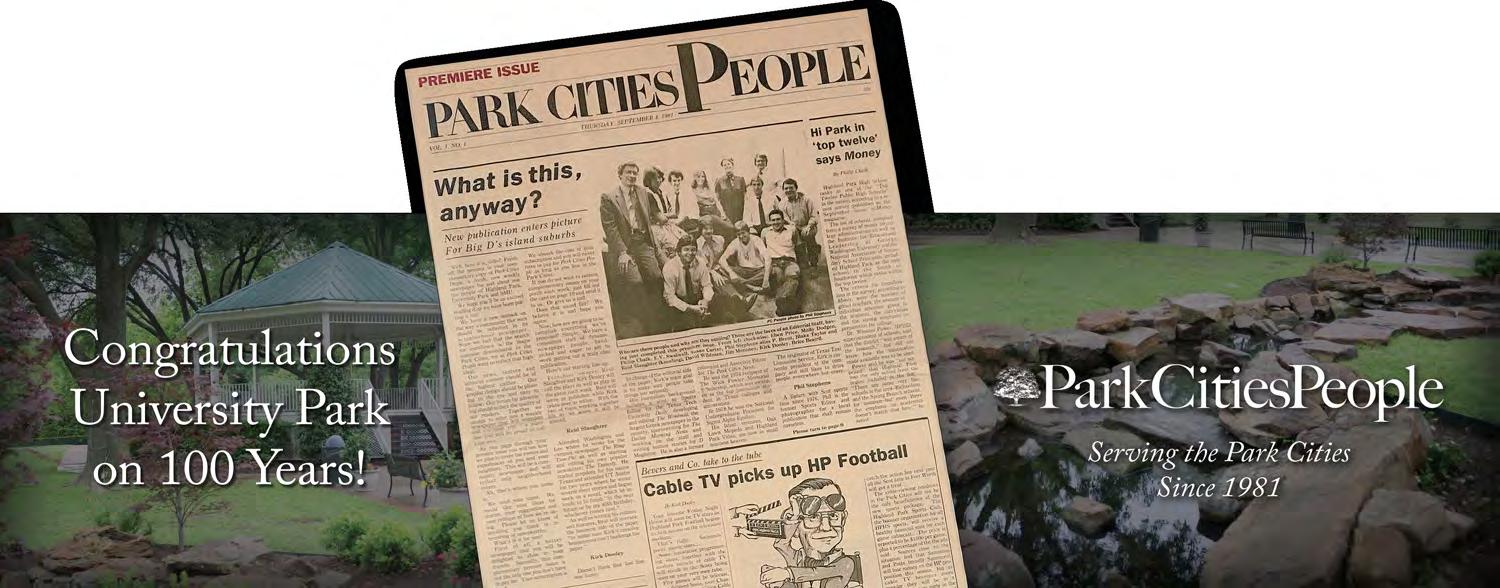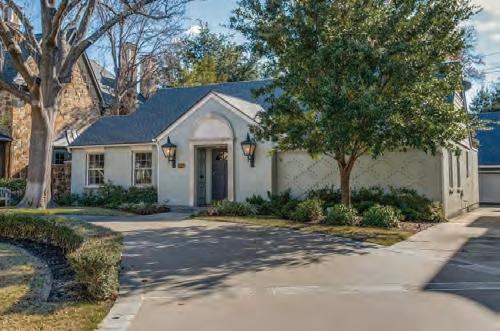









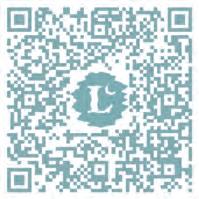














“
Inever aspired to be a mayor,” said Tommy Stewart, who will soon begin his third term as the city’s leader. “I just wanted to be involved and do what I could do to help the city and do what they called on me to do. And I did, I think.”
Stewart grew up in University Park, first in a home on Colgate where he, his parents, and his brother lived after their father came home from serving in the air force during World War II, then at 4300 Stanford Ave.


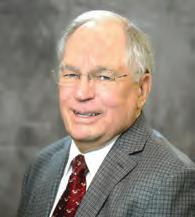
and dimes on the railroad track where the toll road is now to see how flat each coin became from a long line of box cars.
The family moved to a home on McFarlin when Stewart started junior high. He paid a nickel to ride the bus to class, where he loved sports but not chorus.
“I had to stay after school and try to sing,” he said.
“People care and they associate with their neighbors.”
Tommy Stewart
As a child, Stewart, his older brother Bill, and friends ran barefoot through the sawdust covered concrete floor of the cold storage building on the Miracle Mile, trying to see how long they could stay there. “It wasn’t very long,” he said. “It was freezing.”
The carhop at the Easy Way grill on Lovers Lane knew Stewart by name. He went to Beef N-Bun for barbecue, and Ashburn’s Ice Cream was a popular spot. Stewart and his brother placed pennies
He played baseball and swam at Highland Park High School, graduating in 1959.
Stewart left the area to earn a Bachelor of Science in civil engineering from the University of Texas at Austin then returned to Dallas after graduation with his wife Barbie, who had been his high school sweetheart at Highland Park.
The couple moved back to University Park when their three children were young. The kids attended University Park Elementary, ate at Beef N-Bun, and liked the chicken fried steak at the Easy Way.
Stewart, who is still president of Connell Construction Company and vice president of Connell Development Company, became involved in city service around 2000 as a member of the Public Works Advisory Committee.
1. Which is the Park Cities’ oldest retail shopping center, Snider Plaza or Highland Park Village?
a. Snider Plaza
b. Highland Park Village
c. Depends on how you define retail shopping center
d. Neither
2. What was UP called prior to incorporation?
a. SoMethUn b. Southern Methodist Town
c. University Town d. Highland Park
3. What is Wentwood Street named after?
a. Wentwood Forest, ancient woodlands in Wales
b. The Wentworth Elm
c. Wentwood Red, a type of low growing heather
d. A university
4. What was the original name of McFarlin Boulevard west of Preston Road?
a. San Lorenzo b. Roberts
c. McDonalds d. College
5. If you’re jailed in one of University Park’s two cells, what will you be served at mealtimes?
He served on the city council from 2010 to 2016 before becoming mayor in 2020 after former University Park city leaders encouraged him to take on the role.
Stewart began his work as mayor during the COVID-19 pandemic, when he faced the challenge of how best to respond to the novel virus.
His service continued through Winter Storm Uri, when the city responded to 56 water main breaks, all of which occurred in old water mains. The city is replacing those as part of its mile-per-year water and sewer project, and no breaks occurred in the city’s new lines.
“It shows that the new lines we’re putting in held up well,” he said. “I was proud of that.”
Stewart’s goals include completion of a public safety training facility at a newly purchased building on Fondren, and improvements to the Miracle Mile and Snider Plaza. The work on Snider Plaza is scheduled to break ground in the spring, and Stewart said he hopes the area becomes a place where people will enjoy spending time with each other.
Those connections, Stewart said, help make the city he loves such a wonderful place to live.
“It’s the people who make it special,” he said. “People care and they associate with their neighbors.”
a. Bread and water
b. Chick-fil-A
c. Bubba’s
d. Highland Park High School cafeteria food
6. Which has NEVER been a mascot of HPHS?
a. A goat b. A scottie dog
c. A 3-year-old girl d. A pitbull
7. Whose was the first burial in the Daniel family cemetery?
a. Frances Sims Daniel b. “Old Frank”
c. “Rip,” a dog d. William Caruth
8. How many churches are in University Park?
a. Eight b. Seven and a half
c. Nine d. Five
9. When, where and by whom was the last buffalo in University Park killed?
a. Goar Park, 1800, W.W. Caruth Jr.
b. Goar Park, 1752, the area’s lone law officer
c. Snider Plaza, 1931, W.W. Caruth Jr.
d. Snider Plaza, 1931, the area’s lone law officer
10. All of the following roamed the halls of Hyer Elementary School under the watch of its first principal, Newton Manning, EXCEPT:
a. A calf b. Frogs
c. Chickens d. Rabbits
In the spring of 1945, World War II was near its end, and the boys would soon be coming home.
“The Big Three” – the leaders of the Soviet Union, the United States, and the United Kingdom – had met to plan for the defeat of the Axis powers and the shape of postwar Europe.
“No one argues that this master plan of Roosevelt, Stalin, and Churchill can be perfect, but few deny that it is vital to the welfare of humankind,” a front-page Dallas Morning News column read. “Dallas has its master plan, too, and the time for making it effective is now.”
Dallas’ vision for the future included creating a system of parks, erecting a new city hall and auditorium, and stretching its streets and boulevards far north of the city. But that wasn’t going to be possible unless Preston Hollow, University Park, and Highland Park joined with it, becoming part of Dallas.
those of Dallas at large.
An HPISD School Board member speculated that the school district would be absorbed into Dallas ISD. Taxes could go up, with Park Cities residents eventually paying both Dallas taxes and an additional levy for Highland Park schools.
Tensions mounted before election day, a date which could be either “the finest day Dallas ever had,” Park Cities resident Paul Carrington said, or “the date that Dallas missed the boat.”
Turnout was high, and the result was closer than predicted. Annexation lost in University Park by a margin of just 291 ballots, with 1,726 in favor and 2,017 against.
The next day, there was a parade in Preston Hollow. Dallas officials hopped onto a bus labeled “Preston Hollow, Here We Come” and toured the city, which had voted 300-76 to unify with Dallas.

A vote on unification was scheduled for April 3, 1945, and battle lines were drawn.
“There is no compromise, no middle ground in this for the Park Cities,” resident Julius Runge said. “Either we keep our independence, or it is unconditional surrender.”
The mayor and all the members of University Park’s city commission endorsed unification. City Commissioner Ralph A. Porter announced his support in dramatic fashion, making a statement in favor of the merger just a few hours before he was scheduled to speak in opposition. The president of SMU came out in strong support, as well.
Opponents of Dallas’ master plan called it a “monster plan.” If the Park Cities united with Dallas, “the home environment our sons and daughters have gone to fight for – the home they dream of coming back to will be no more.”
The Park Cities might receive less police protection, zoning ordinances could fall by the wayside, swimming pools could be opened for general use, and the interests of Park Cities voters would be drowned out by
Unlike in the Park Cities, life in Preston Hollow prior to annexation stunk, according to a 2002 article in the Preston Hollow Advocate magazine. The city had never collected any taxes, and there were few funds to pay for a police or fire department, let alone a sewer system.
To highlight the benefits Preston Hollow residents would receive as part of Dallas, the April 4 parade included a fire truck, a police car, a garbage truck, and a truck hauling two large concrete sewer pipes.
And as for the Park Cities? Dallas wasted no time in annexing everything that surrounded Highland Park and University Park. Dallas Mayor Woodall Rodgers met with supporters and announced that the vote was actually a victory – Park Cities residents had only narrowly defeated annexation and, while they had made a mistake, “eventually, they will correct it.”


Celebrate University Park’s Centennial by finding your dream home –where past and future converge. Let's make your next move a part of this historic milestone. Your home, Your legacy.
“We will cut the pattern to fit the cloth from now on,” he said. “Dallas is on the march because its old-time spirit is aroused.”
Note on sources: Except where otherwise noted, the quotations and information used in this article were sourced from The Dallas Morning News articles published between Dec. 28, 1944, and April 5, 1945.

elliott@daveperrymiller.com214.675.8353elliott.daveperrymiller.com

 By Sarah Hodges sarah.hodges@peoplenewspapers.com
By Sarah Hodges sarah.hodges@peoplenewspapers.com
If you live in University Park, odds are you’re within an easy walk of at least one park and some neighborhood shopping. Your street is lined with trees, and it’s narrow enough that traffic doesn’t speed down it. You almost can’t avoid being near a church, school, or neighborhood center, such as the library or YMCA.
That kind of walkable, environmentally-friendly community design is called “New Urbanism,” and it was considered revolutionary when outlined by the Congress for the New Urbanism in 1993, said Preservation Park Cities archives chairman Taylor Armstrong.
But University Park’s design was nearly complete by the 1950s. So how did it end up with the kind of neighborhood that developers today aspire to create? The answer, Armstrong said, is due partly to a department


store owner’s vision for developing the farmland around Dallas.
The story of University Park begins in the 1840s, when two migrants bought the land that later became the city.
The first, William Caruth, arrived in the Dallas area in 1848 with $100 in possessions. When he saw the North Texas plains, he decided they were ideal for cotton farming. His brother, Walter, joined him and, with a $1,000 loan from their father, they opened a general merchandise store and began buying land, according to The Caruth Saga, … a September 1975 D Magazine article.
The second landowner, Frances Sims Daniel, came to the area from Alabama in 1849 with her sister, children and slaves. She spent her life savings to buy 640 acres at 50 cents an acre, former mayor Roy C. Coffee Jr. said in a 2009 speech.
Development of University Park began in earnest in the 1920s with property south of Lovers Lane between Turtle Creek and Preston Road.
One of that area’s two primary developers was Leonard Volk, an innovative shoe store owner from Baltimore who opened the nation’s first entirely air-conditioned department store in downtown Dallas. Volk conceived of a development he called “Brookside

McKinley Built Homes is a highly successful builder of fine homes in Highland Park, University Park, and Preston Hollow.
Founded in 1982 the company has an established and well-deserved reputation for innovative design and uncompromising quality.
“We don’t build an exceptional number of homes, We build a number of exceptional ones.”
mckinleybuilt.com
Estates,” which quickly became known as “Volk Estates” and featured scenic lots, according to The Homes of the Park Cities, Dallas: Great American Suburbs
“I think he saw an opportunity to do some more estate like development like Highland Park had,” Armstrong said, noting that Highland Park was designed by the same planner who had previously developed California’s upscale Beverly Hills neighborhood. “In fact, he wanted it to be as good or better than Highland Park.”
The expansive properties in Volk Estates attracted the likes of oil tycoons Algur Meadows and Everette DeGolyer. “Anybody who was anybody lived in Volk estates, still does,” Armstrong said. The project also spawned development north of Lovers Lane, he added, explaining that “his doing that, taking that risk, really attracted people who might not be able to afford to be in Volk Estates, but they wanted to be close to it.”
The houses in University Park were built a handful at a time, and over the years the area ended up with a blend of homes, parks and retail. The streets were built in a grid pattern simply because they could be — the landscape was featureless prairie, and nothing stood in the way.
“It’s really almost an ideal setup,” Armstrong said, “that just sort of happened over time.”


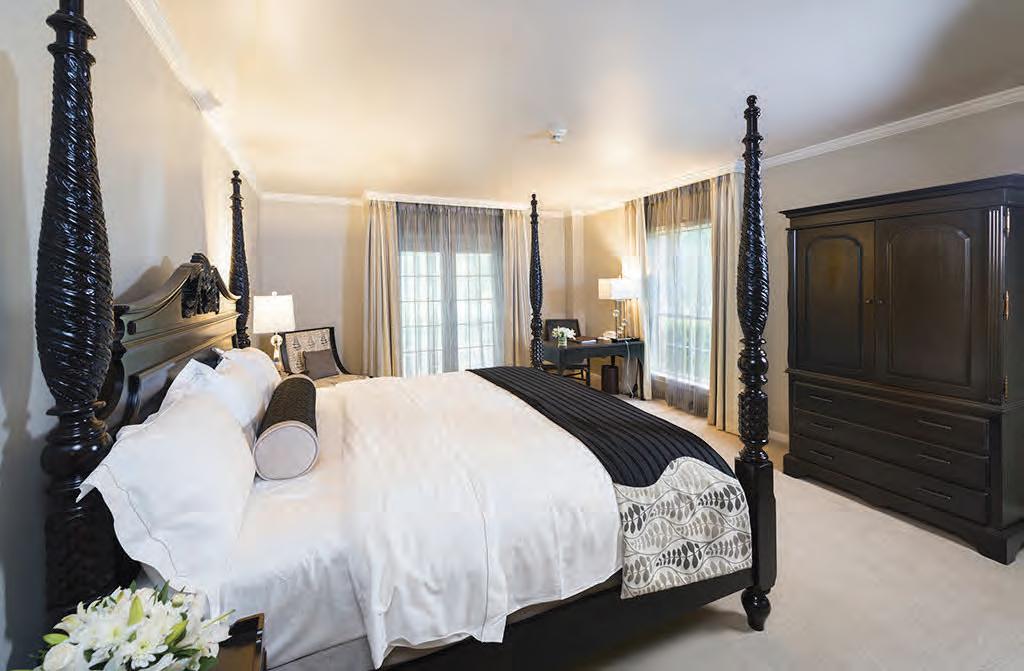


•

University Park’s oldest congregation met for the first time in 1899 at Temple Emanu-El because no churches would welcome its members in their buildings. The congregation has since made it a mission to open its doors to others in need of a place.
The First Unitarian Church, which has called Preston Road home since the 1940s, was organized in December 1899 under the leadership of Daniel Christian Limbaugh, who recognized the need for a church for those “at sea without a chart or compass” due to their view that “the old dogmas, doctrines, and creeds appear outgrown.”
The church has since expanded from 32 founding members to 1,100. It serves about 3,000 people, broadcasts to 30 states and seven countries, and is continuing to grow by about 10% a year, said

the Rev. Dr. Daniel Kanter, the senior minister.
The church has always been a place of “genuine inclusiveness,” he said. “We have stood on those principles that we will create tolerance and inclusion wherever we
can, throughout our history.”
The church was likely the first in Texas to integrate, Kanter said. In 1944, the church’s minister, the Rev. Dr. Robert Raible, “shocked some people in the Dallas church community when he welcomed
two blacks to his congregation,” according to his 1983 obituary in The Dallas Morning News. Raible became a leading voice for school desegregation, assailing the Dallas school board for dragging its feet.
The Unitarians have continued to
welcome those in need and worked as crusaders for social justice. Members of the Student Nonviolent Coordinating Committee met at the church in the 1960s. The Unitarian Church’s ministers marched in Selma with Dr. Martin Luther King Jr.
In the early 1970s, the church gave the keys to its library to a group of the area’s first Muslims so that they would have a place for prayer. During the AIDS crisis, Catholic gay men were given communion in the church’s sanctuary. The members of the Unitarian Church were “one of the first churches in the early ’70s in the country to declare ourselves a welcoming, affirming community for lesbian, gay, and transgender people. We continue that work,” Kanter said.
“This is actually a really important church in the history of America,” he continued. “And very few people even know who we are or what we’re up to here.”
The long history of Highland Park United Methodist Church (HPUMC) dates back to 1915 when the first classes were held at SMU.
Back then, SMU required its 700 students to attend one church service each Sunday, a challenge with no churches near campus.
What is now HPUMC would become the solution.
The University Church held services in SMU’s Dallas Hall with the university’s first president, Dr. Robert S. Hyer, giving Dr. Ivan Lee Holt, chaplain and chairman of the School of Theology, the privilege of preaching.
In 1916, Bishop Edwin Mouzon had Methodists meet at University Methodist Episcopal Church, South (MECS), which later that year became Highland Park MECS with Clovis G. Chappell as pastor. His 30 books of sermons are still read today.

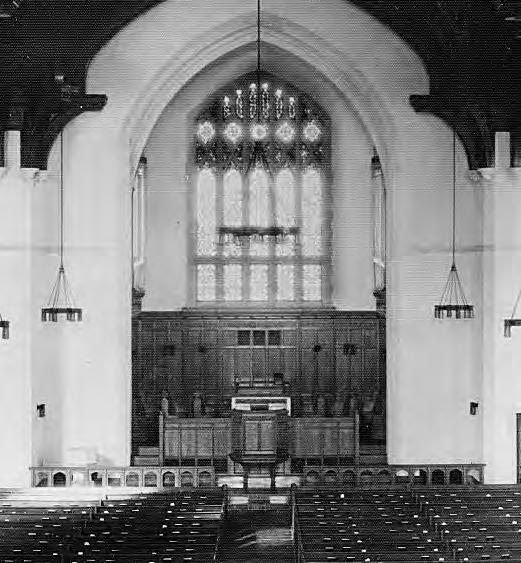
In 1927, members entered the new sanctuary, singing, “All Hail the Power of Jesus Name.” SMU president Dr. Charles C. Selecman preached the message that morning.
When the Great Depression hit, HPUMC helped more than 200 needy families. The ministry included giving students small loans, serving in West Dallas,
and donating food and clothing.
In 1939, Georgia Bates became the church’s missionary nurse, serving for 34 years.
Under the Rev. William H. Dickinson, a WWII veteran and senior minister, HPUMC built its sanctuary, launching construction with a ceremony in June 1953.
The congregation honored Dickinson’s profound impact by naming a home for older adults for him. In 1971, Dickinson Place welcomed low-income elderly residents, providing affordable rooms and a healthy place to live.
The following year, the Rev. Leighton Farrell became senior minister. The church grew, became a significant part of the North Texas Conference, began a Haiti Eye Clinic, and added a television ministry.
Since 2013, the Rev. Paul Rasmussen, a fifth-generation Methodist pastor, has served as senior minister.
In 2015, HPUMC celebrated 100 years with 5,500 members and guests gathering in Moody Coliseum to celebrate a congregation with a heart for leading people to Jesus.
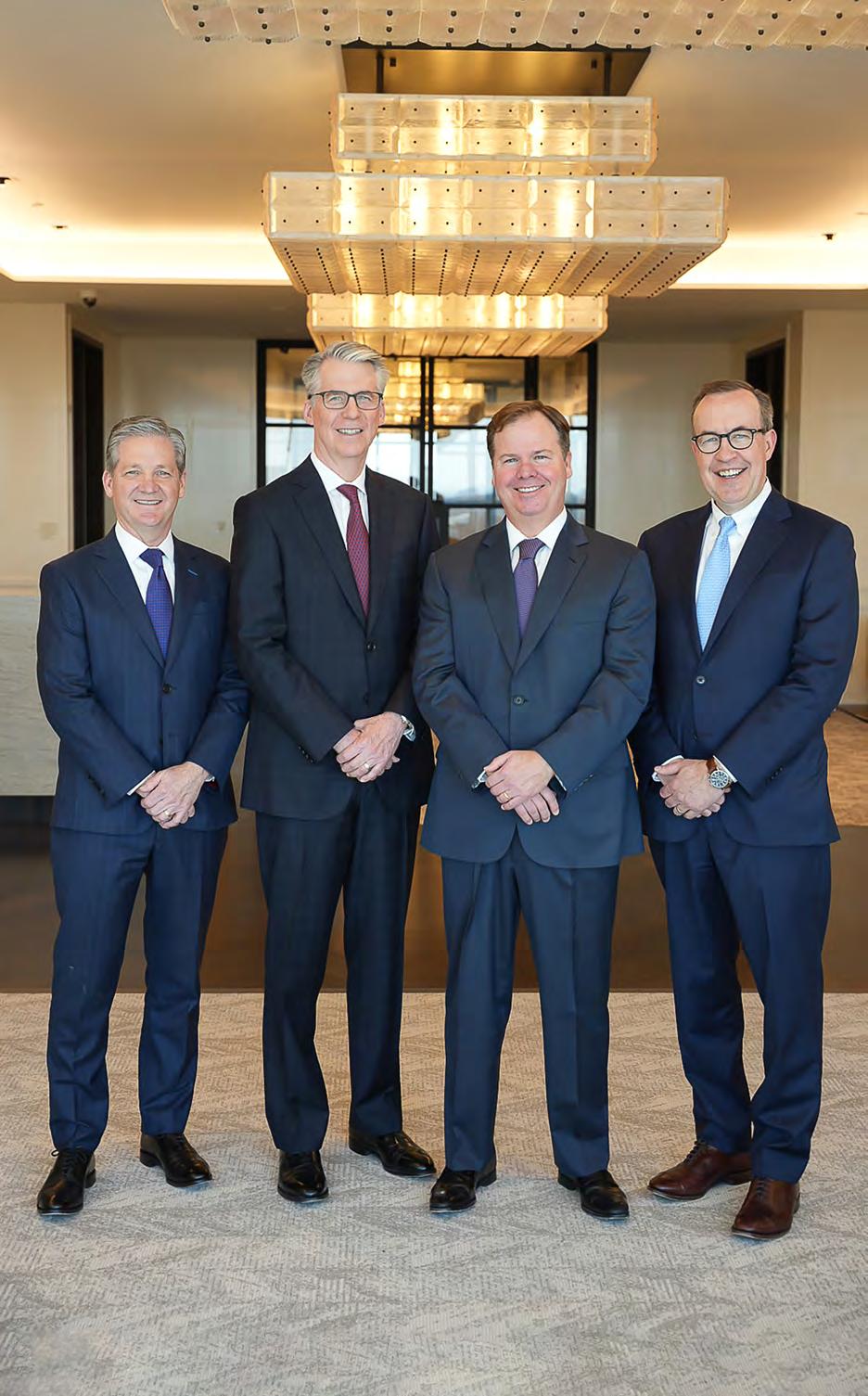
Headquartered in Hilltop Plaza, Hilltop Holdings flaunts its University Park ties not only in name, but in personnel.
Many of Hilltop’s employees live in University Park, and chairman Gerald J. Ford is an SMU graduate and longtime supporter. With this familiarity and appreciation for the community, Hilltop Holdings is dedicated to equipping University Park citizens with the most diverse and robust financial services possible.
Hilltop has three subsidiaries to provide these services: PlainsCapital Bank for banking, HilltopSecurities for municipal investment banking and PrimeLending for mortgage origination. In each of these business lines, Hilltop’s goal of meeting the highest standards of excellence shines through.
PlainsCapital is a leading Texas-based bank that provides both consumer and commercial banking to fit any individual business model. They also provide wealth management services through The Private Bank at PlainsCapital.
HilltopSecurities consistently ranks as one of the top municipal advisors in the U.S.. They offer full-service municipal investment banking and advising for public entities, institutional investors, housing finance agencies, broker-dealers and individual investors.
PrimeLending has been recognized for its award-winning culture and was an Editor’s Pick in the Scotsman Guide, a leading resource for mortgage originators. PrimeLending focuses exclusively on home purchases, refinancing, and renovation financing.
“From day one, our company has been focused on building long-term customer relationships and providing a level of service that is all too rare these days,” said Jeremy Ford, president and CEO of Hilltop Holdings. “We realize we have the ability to make a positive difference in some of the most important aspects of people’s lives. We take that very seriously.”
Hilltop Holdings is grateful to their clients and the people of University Park, and admires community members’ generosity when it comes to volunteering and charitable donations. To show their appreciation, the Hilltop team can think of no better way than to mirror this generosity and give back to the community they love.
From the North Texas Food Bank and local schools, to the American Heart Association and the American Cancer Society, Hilltop is proud to lend their support through financial contributions and in-person volunteering. Most recently, HilltopSecurities donated $5,000 to Friends of the University Park Library to provide reading and educational programs for adults and children alike.
“It’s an exciting time for the entire Hilltop organization,” Ford said. “We’re looking forward to building on our legacy and continuing to serve our customers and communities.”
They’ve seen neighbors come and go, along with Snider Plaza’s spudnuts and the chicken salad sandwiches at Ralph’s Fine Foods. But members of the Cude family, who have lived in University Park for four generations, say that the heart of the community hasn’t changed at all.
“We’ve seen a lot of change,” John Cude said, “and very little change.”
When one of the three Cude grandkids fell off his bike, a neighbor called his mom, Jen Clifton, to give her a heads-up. There’s always someone to give the kids a ride home and to look out for them if something could be wrong.
“People notice,” Clifton said, “and care.”
It’s that sense of community that has kept the Cude family in University Park for almost 90 years.
Eva and J. Harold Cude were the first family members to arrive in University Park in the 1930s when they moved into a newly built home at 4117 Stanford Ave. Eva, an SMU grad, and Harold had met when the pair went on a joint blind date with Eva’s friend Gladybelle Bandy. Eva decided that Harold was the better-looking of the two dates and beat Gladybelle to the door.
Their son, John Cude, married his Highland Park classmate Sandra Graham. Even though the two had gone to school together, they didn’t connect until after graduation when Sandra, who was working at Nieman Marcus, went looking for brown ink and found John, then a dental school student, behind the counter at Stewart Office Supply.
John and Sandra lived on Binkley before moving into a house in the University Park Elementary attendance zone. However, for John, who had gone to Hyer Elementary, the location wasn’t an easy choice.
“Our probably biggest argument was when we started looking at this house, and it wasn’t in Hyer,” Sandra, who went to University Park Elementary, said from the living room where they still live. “I tease him that I won, but he really loved the house.”
Their children, Jen and Hampton, grew up playing outside with the neighborhood kids. Jen remembers her grandfather on the Graham side, affectionately known as “Good Daddy,” walking over daily to spend time with her and her brother. The neighborhood kids would all pile into his car for
special trips to 7-Eleven or McDonald’s. Jen said her grandparents drove carpool, attended sporting events and recitals, and got to know her friends and their families.
“So many of my memories are of my grandparents just being a part of our everyday life,” Jen said, “just constantly at our house, or we were at their house.”
Eva, who frequently hosted her grandchildren or came to stay with her son and daughter-in-law, was known for dressing up in a witch costume, complete with yellow kitchen gloves, to hand out candy at Halloween.
Today, Sandra and John carry on the Halloween tradition, with Sandra as a witch with kitchen gloves and John as a vampire. John, a dentist who still practices at University Park Dental on Sherry Lane, has even made his own teeth for the costume.
Hampton now lives in Austin but returns frequently to the community where he was raised. He’s a proud uncle to Jen’s kids and helps his parents as much as he can.
“He’s very much like Good Daddy,” Sandra said.
Jen, who married her sweetheart from Highland Park High School, moved back to University Park when their oldest son was an infant. Today, their home is an easy walk from both her and her husband’s parents.
“We have certainly worn out Boedeker walking back and forth to each other’s homes in high school, and now our kids do so going between both grandparents’ homes on Boedecker,” Jen said.
Jen followed in her mother’s footsteps and served as president of the University Park Preschool Association. The two youngest Clifton children became Boone Elementary Bulldogs when HPISD redrew its attendance zones in 2020, and today, Jen is active in the Boone PTA.
The Clifton kids, Jen said, have the same connection to their grandparents as she did growing up. Their grandparents drive carpool, take the children fishing in Caruth Park, and volunteer in the cafeteria. Jen’s fourth-grade son and his friends sometimes at her motherin-law’s house before biking to school.
The family loves running into friends and their extended families. Sometimes, friends share their memories of times with Jen’s grandparents in the “small little circle” that is University Park.
“You’ve got everything you want in a big city,” Jen said. “But it feels like a very small town.”


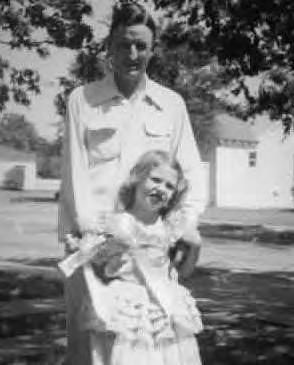

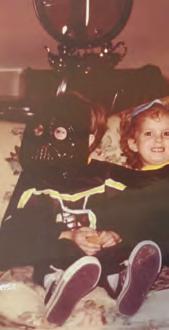







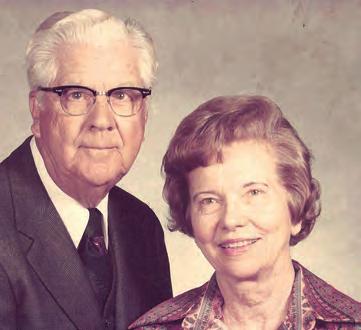


The city of University Park has planned a full week of events to celebrate its 100th birthday. It’s also teamed up with local vendors for Centennial-themed giveaways, discounts, and special merchandise on sale the week of April 7 to 13.
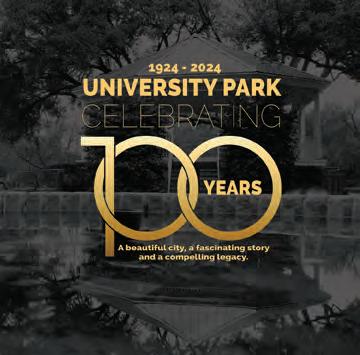
Residents can leave their mark on city history by purchasing personalized Centennial bricks or contributing to the city’s digital photo archive. They can take home a slice of history by ordering a coffee-table style Centennial Book, which explores the twists and turns that made the city what it is today. Visit uptexas.org/466/Centennial-Celebration to learn more about the special offers and how to get involved in University Park’s Centennial Celebration.
Tuesday, April 9, at 1:30 p.m.
A Look Back at the History of the University Park Fire and Police Departments at the University Park Public Library. Panelists will include Fire Chief Randy Howell and UPPD Criminal Investigation Division Lieutenant Curtis Ellenburg. The panel will be moderated by former UP Director of Communications and Marketing Steve Mace.
Tuesday, April 9, at 7 p.m.
A Visit with the Mayors at the University Park Public Library. The panel is scheduled to include Mayor Tommy Stewart (2020-present), Mayor Olin Lane
(2014-2020), Mayor Dick Davis (20102014), Mayor Harold Peek (1998-2004), and Mayor Roy Coffee Jr. (1976-1982), and will be moderated by former City Councilmember Gage Prichard.
Wednesday, April 10, all day Free admission to the George W. Bush Presidential Center and the Meadows Museum at SMU. Visit bushcenter.org/ plan-your-visit to reserve Presidential Center tickets online. Show your valid driver’s license as proof of UP residence to receive your free Meadows Museum admission. Any UP resident who joins the museum as a new member from April 7 to April 13 will get an additional three months of membership free.
Friday, April 12, at 10 a.m.
100th Anniversary Ceremony: Dedication of the Centennial Tree and Time Capsule in Goar Park.
Friday, April 12, from 10 a.m. to noon
Open houses at city facilities (City Hall, Peek Service Center, UP Public Library and Transfer Station).
Saturday, April 13, from 6 p.m. to 9 p.m. Centennial Celebration at Goar and Williams parks. The celebration will feature food trucks, entertainment for all ages, and an after-dark drone show.
Tuesday, May 14, at 7 p.m.
Friends of the University Park Public Library Centennial Series with UP city




Though many are unaware, the two oldest houses in University Park sit in the bucolic historic 3400 block of University Boulevard.
The second oldest, a 1916 prairie style home originally owned by Theology Dean James Kilgore at 3415, belongs now to architect and preservationist Craig Melde and his wife, Rebecca. He’s compiled an inventory of UP houses up to 1930, with their addresses, age, and style of architecture.
“We’re putting together an inventory for Highland Park and University Park for a book that will be published soon, Park Cities Homes: A Field Guide ,” he said, referencing his work with Preservation Park Cities. “I think we have 170 houses. The house on the corner predates this house by half a year or so.”
Melde identifies the oldest house as the
majestic white neoclassical home constructed for SMU Bishop Edwin Mouzon at 3444. Philip and Melissa Wise own it now.
“There are probably 10 historic districts in Dallas that are protected,” Melde noted. “I started Preservation Park Cities in the ’90s to build momentum to get the city to adopt some sort of protection mechanism. But that’s not going to happen.”
quite beautiful, and I’m scared one of them is going to just go away.”
Melde has since left Preservation Park Cities, though he praises the organization for its great efforts and the increasing impact it has on the community.
“It’s an amazing story of how one neighborhood can have such a rich, diverse history in a city as new as Dallas.”
“All we have is advocacy,” Melde said, adding he worries about historic homes like those at the architecturally significant intersection on Shenandoah.
Bonnie Wheeler
“There are four Charles Dilbeck houses, one on each corner,” he said. “They’re really
“I think we designated 20 or 30 houses,” he said. “It’s just a plaque of recognition that says this is an important place.”
SMU Medieval Literature professor and neighborhood historian Bonnie Wheeler moved into the block in 1975, then into her elegant present 1925 home in 1978.
“This house started with the back house, which was built in 1915, but because of
the war, construction of the main house was delayed due to the wait on materials — bricks from Chicago. This is true of almost all these houses. As they were building them, they tended to live in these little back cottages while they were waiting for the front house to be built.”
“This was kind of ‘Dean Street,’” she said. “I’m only the third owner of this house, which tells you something about consistency on this street. Although, these days that’s rare.”
A photo scanning project turned into a book, she said. “It was supposed to take a weekend, but it turned out taking two years.”
The Block Book (Scriptorium Press, 1996) is her engrossing and exhaustive history of the 3400 block of University Boulevard.
“The history of these houses and the people who lived in them just got richer and richer,” she said. “It’s an amazing story of how one neighborhood can have such a rich, diverse history in a city as new as Dallas.”

Park City Club has a saying: “The only thing we overlook is the view.” This rings true not only in the club’s breathtaking panoramic views of the Dallas skyline, but in the staff’s fervent attention to detail. From business lunches and meetings to happy hours and weddings, Park City Club exceeds its members expectations with the utmost care and attentiveness. The club has been situated in its idyllic location at the heart of University Park and Highland Park since 1984, making this its 40th year serving the Park Cities people.
“We wanted to create a place where like-minded community leaders and professionals could gather to enjoy elegant dining and gracious service,” said founder Harry Chris. The club has not only achieved this, but has become the Park Cities’ go-to spot for connecting with associates, friends and family.
“Park City Club is not just a place to meet. It’s become a tradition for generations of families,” said Lisa Chris-Tietjen, president.
“We have incredibly loyal members,” added general manager Michael Davis. “We watch their kids grow up and it becomes a family affair. We are honored to meet such interesting and incredible people.”
Park City Club has reciprocity with more than 200 private clubs which offers a diverse range of options and facilities worldwide. Other member benefits include access to networking and professional groups, hundreds of events throughout the year and private meeting rooms and spaces for larger events.
Today, Park City Club stands as a testament to its founders’ vision and commitment to excellence. After 40 fabulous years serving the Park Cities, Park City Club is even more eager to serve its members for the next 40 years and beyond.
Park City Club
5956 Sherry Lane, Suite 1700 214.373.0756 parkcityclub.net

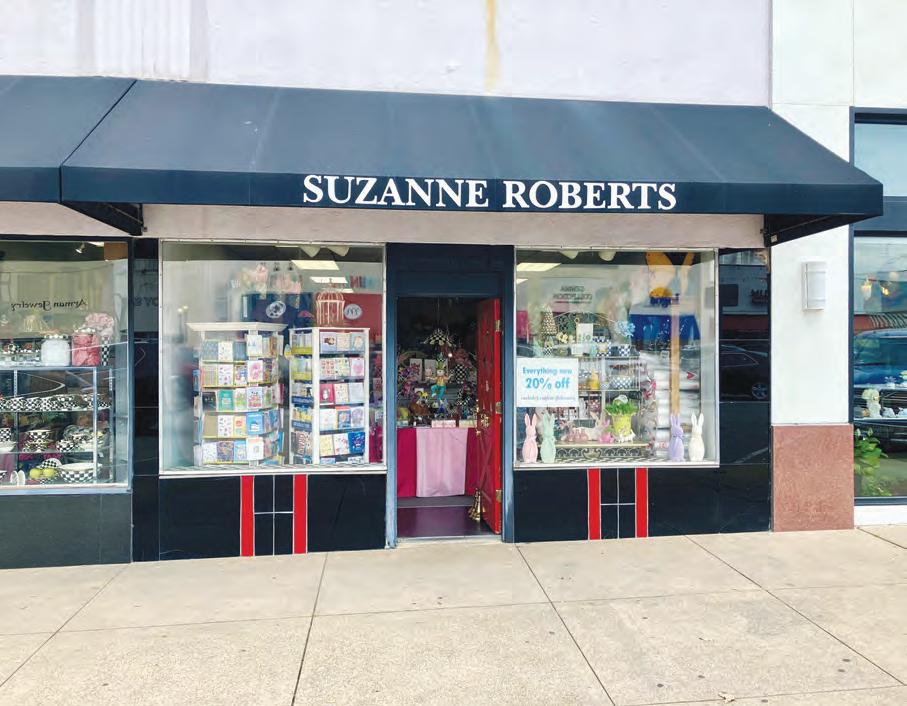


Snider Plaza opened in 1927 but remained underdeveloped through the Depression.
By 1945, University Park had grown to around 18,000 residents and had 120 businesses. Businesses have come and gone over the years, but a few have stood the test of time.
The Fuqua family’s Plaza Health Foods at 6722 Snider Plaza is likely the oldest.
“It was originally my grandad Paul’s Plaza Bakery, which he started after World War II,” recounted proprietor Max Fuqua. “Safeway was becoming more popular as people trended toward a one-stop shop. They kind of saw the writing on the wall and decided to do something no one else was doing. My grandmother, Esther, was trained as a nurse before the widespread use of pharmaceuticals.”
the bakery in 1949.
“It became a center for health here in Dallas and later nationwide,” said Max, who took over the business in 1999. “We have customers all over the world now. But we have frozen yogurt now instead of cakes. My dad took it over in the ‘70s and built it up into a bigger operation. He put in frozen yogurt in the ‘70s, so we’re probably the oldest yogurt shop in town, too.”
Another venerable plaza mainstay is Kuby’s Sausage House and Market at 6601 Snider Plaza, opened by Karl Kuby Sr. in 1961. Generations of UP residents have grown up with its beloved German food and fare.
“The only thing that’s certain is change.”
Suzanne Roberts
Having learned plant-based medicine, she put the first supply of vitamins and herbs in
“6601 was originally two stores — Kuby’s and Mr. Tuxedo,” proprietor Karl Kuby Jr. said. “In 1971, Mr. Tuxedo said, ‘We really gotta move because our tuxedoes are smelling like sausage.’ So, my dad took over that part, and Mr. Tuxedo moved down to the corner.”
In 1977, Kuby’s expanded the deli, meat
market, and shop by absorbing the space of an auto parts store at 6605.
“I love what I do,” Karl Jr. said. “What I love even more is seeing my customers’ fourth and fifth generations. That’s really cool.”
So is seeing Karl Sr. still visiting weekly at 91.
“He loves seeing the customers that he’s seen forever,” Karl Jr. said. “And he loves giving out the gummi bears to the kids.”
Suzanne Roberts’ self-titled gift shop at 6718 Snider Plaza will turn 49 this November. What began as a way to “make a little extra money” has flowered into a Plaza mainstay for stationary, gifts, and seasonal décor.
“I’m the only one outside of Neiman Marcus who carries MacKenzie-Childs,” she boasted.
“Some of the young (customers’) grandparents were shopping with me,” Suzanne said.
“Business is better than it used to be in that people have more discretionary income,” she added, but rents have increased, and she bought her present building in 2016.
“I’m always looking for new things, changing it up,” Suzanne said. “The only thing that’s certain is change.”
Burger House - 6913 Hillcrest Ave.
Started in 1951 by Prometheus “Jack” Koustabardis, the stalwart Burger House continues to serve burgers, fries, and shakes, with newer locations on Mockingbird Lane and Marsh Lane in Addison. The no-nonsense vintage-style original hamburger stand is a great place to get the feel of college cuisine in the 1950s. Jack’s seasoned fries remain a staple at the State Fair of Texas.
The Ivy House - 6925 Snider Plaza
Founded in Old Town shopping center in 1971 as a Wedgewood specialty store, The Ivy House moved to Snider Plaza in 2000. Offering 100s of brands and 1,000s of luxury items and gifts, it remains the go-to place for bridal and wedding gift registries. Fine china and silverware are among the most popular items at a store that also offers a vast array of seasonal holiday décor, plus personal shoppers, registry consultants, and gift certificates.
Food From Galilee - 6710 Snider Plaza
The family business of Lebanese brothers Kasel and Yasir Elkhaled, Food From Galilee, started as an American sandwich shop with Middle Eastern dinner options in 1991. By 2000, the American options had faded into a full-fledged Middle Eastern restaurant by popular demand. The menu includes vegetarian favorites such as hommos, falafel, and baba ghannouj, plus savory meat dishes like gyros, lamb kebabs, chicken shwarma, and Cornish hens.
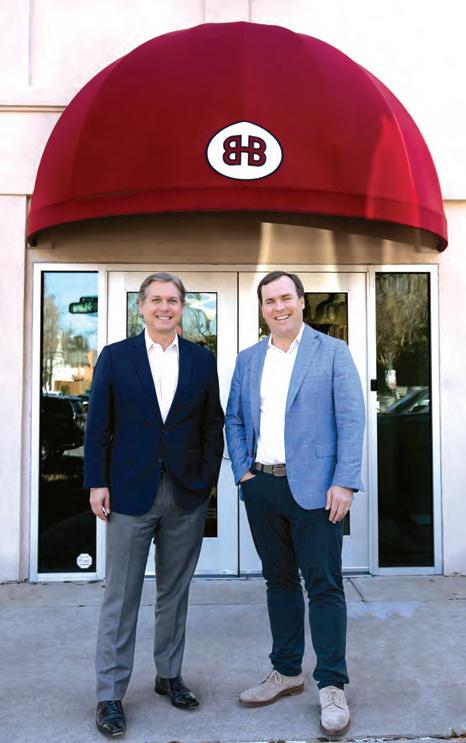
Benchmark Bank likes to say they know their customers by name, not by their account numbers. A true Texas community bank, Benchmark has locations in Plano, Austin, Houston, Park Cities and Preston Hollow. Benchmark is a family-owned company and prides itself on building personal relationships with customers and giving them the respect that they, and their money, deserve.
With this year marking their 60th anniversary, Benchmark is confident in these relationships and their ability to serve the Park Cities and Preston Hollow communities. Benchmark sees these neighborhoods as home, and they treat customers like family.
“This is where we live, are raising our children and, in many cases, were raised ourselves,” said Corby Ferrell, president of Benchmark Bank’s Park Cities branch. “Our chairman, as well as numerous board members and branch employees, are graduates of Highland Park High School. When you live here, you have a vested interest to ensure that the neighborhood thrives. We take pride as a company, and as

individuals, in supporting our schools and local philanthropic organizations. Our customers are our friends and neighbors. We are all part of a community that we love serving.”
For Benchmark Bank, part of contributing to a thriving community is providing customers with security and comfort when it comes to their finances. From savings account set-up to loan management, Benchmark advocates for its clients and provides top tier service through a knowledgeable and proficient team.
The Benchmark Bank team is committed to serving the Park Cities and Preston Hollow communities for years to come, and plan to continually refine and update their banking capabilities while never losing the face-to-face, personal interactions that set them apart.
BenchmarkBank.com
7019 Hillcrest Avenue 972.673.4060

1. It’s up for debate. Snider Plaza predates Highland Park Village by several years, according to Taylor Armstrong, Preservation Park Cities archives chairman. But what about the plaque in Highland Park Village near the current site of the Christian Dior boutique? It states that Highland Park Village was “the first of its kind” and “is the prototype for modern shop ping centers.”

Highland Park Village was the first shopping center with a unified architectur al style and single own ership. Snider Plaza, in contrast, was “built by several owners without a single architectural style echoing a small town’s downtown diversity,” Armstrong said. Depending on how you define shopping center, Snider Plaza may be the Park Cities’ first, even though Highland Park Village was the first shopping center of its type.
“Wentworth,” which is also the name of a university, according to Coffee’s 2009 speech. The street was renamed to avoid confusion with a street in Oak Cliff also called Wentworth.
4. The original name of McFarlin Boulevard west of Preston Road was San Lorenzo Drive. 1925 plans for “Loma Linda, An Addition To The Town Of University Park,” include Spanish-sounding names for all the streets west of Preston Road between University Boulevard and Stanhope Avenue. Westchester Drive was originally Santa Rita, Douglas Avenue was Santa Rosa, Larchmont Avenue was San Lucas Drive, and Windsor Parkway was Loma Linda Parkway.
But if you guessed that this section of McFarlin was once called Roberts, you’re close – that was the name of McFarlin Boulevard near SMU.
the pup was replaced by a revolving roster of cheerleaders’ energetic younger brothers and sisters, according to the Morning News . But a pitbull has never helped cheer for the Scots.
7. “Old Frank,” a slave for more than 40 years, was the first burial in the Daniel Family Cemetery in 1850, according to the Historical Marker Database. But the conditions in University Park in the 1850s must have been hard on all members of the Daniel family. Isabella Harwood, the daughter of early settler Frances Sims Daniel, died in 1851, just two years after her arrival. Frances Sims Daniel herself died in 1853.

shot the buffalo. He gave its meat to the Salvation Army and mounted its head on his office wall.
What happened to the rest of the herd?
According to a May 19, 1931 article from The Dallas Morning News , two of the buffalo out of the original herd of eight remained at large and the hunt for them extended north 100 miles from Dallas. The fate of those last two buffalo has been lost in the annals of history.
10. Frogs. Hyer’s first principal, Newton Manning, was a “grown-up kid.” He showed up for Hyer’s carnival in a clown suit, complete with a red nose, and donned a Santa costume before Christmas, according to a 1969 Dallas Morning News article.

2. Before incorporation, University Park was called SoMethUn, according to 2009 speech by former mayor Roy C. Coffee Jr. The name came from the bill of lading on building materials used to construct SMU’s Dallas Hall. Because no city surrounded the university, SoMethUn was written to indicate the supplies’ destination.
3. Most of the streets north of Lovers Lane are named for the nation’s univer sities, including Stanford, Bryn Mawr, Amherst, and Colgate. Hanover Street gets its moniker from the town surround ing Dartmouth College. Caruth is named for one of the two original families who owned the land that later became Uni versity Park.
But what about Wentwood? No, it’s not named after Wentwood Forest in Wales. Wentwood was originally called
5. Let’s hope you like chicken! Bubba’s is on the menu for break fast, lunch, and dinner in the University Park jail. But what if an inmate is vegan? Not to worry, says University Park Community Information Officer Paige Ruedy. Bubba’s has vegan and vegetarian options, such as vegetable sides, and the police department will ensure that it meets all dietary restrictions before placing an order.


Seven and a half. Seven are entirely within University Park’s city limits: First Unitarian Church, Highland Park Presbyterian Church, Park Cities Baptist Church, University Park United Methodist Church, Preston Road Church of Christ, St. Christopher’s Episcopal Church, and Christ Lutheran Church. Part of Highland Park United Methodist Church is in University Park, and part sits in Highland Park, Armstrong said.

6. A pitbull. Until at least 1947, Highland Park High School’s mascot was a scottie pup, who attended games in a specially made blanket adorned with school’s colors. But at least once he had help. At a 1937 football game, the dog was joined by a goat presented by the Highland Park Dads’ Club as a “special aid to Scottie,” according to The Dallas Morning News articles. Sometime prior to 1957,
9. Snider Plaza by W.W. Caruth Jr. in 1931. There had been a wild west show at the Caruth plantation, Coffee explained in his 2009 speech. But the show’s buffalo broke through a fence and headed down Lovers Lane. Most of the buffalo turned north, but one buffalo went south to Snider Plaza and started terrorizing the area’s residents. University Park’s lone police of ficer called Caruth, who came over and
Manning also brought a farm’s worth of animals to the school over the years, including goats, rab bits, chick ens, and a calf.
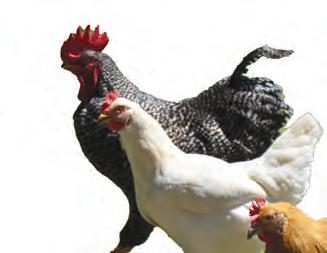
The calf, which was bottle-fed by students, had to go when it could no longer fit through the school’s door. The chickens also created problems. “They flew into classrooms until their wings were clipped,” according to the Morning News. No records exist, however, of Manning welcoming any amphibians into the school, including frogs.

8-10: Congratulations! You’ve earned your doctorate in University Park history.
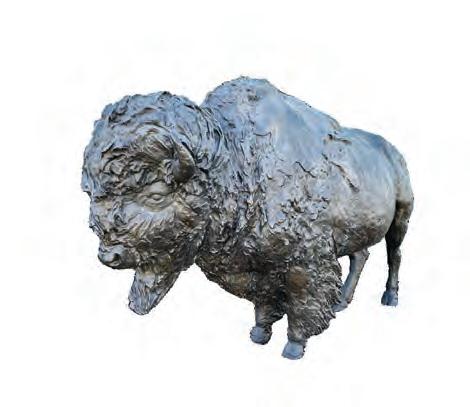
5-7: Not bad! Keep studying up and you can call yourself a Scotsman.
2-4: You’ve spent too long cruising the Miracle Mile. Time to hit the history books!
0-1: When did you get here? Are you still unpacking?
Share your quiz results on your Instagram Stories and tag us @PeopleNewspapers for a chance to be reposted!


Happy 100 year anniversary to the City of University Park from your friends at the Moody YMCA


Exciting changes are happening for Tolleson Wealth Management. With a freshly redesigned Highland Park office and a newly opened location in University Park, the Tolleson team is looking forward to continuing to build relationships and strengthen financial futures.
“Serving our local University Park community is important to us and our goal to provide all things financial for families,” said Tolleson Wealth Management president and CEO Carter Tolleson. “The City of University Park has hit an exciting milestone with 100 years, and we are honored to celebrate as a new neighbor.”
Tolleson Wealth Management has served Dallas for more than two decades and continues to offer comprehensive services such as investment management, estate planning, trustee and estate settlement, philanthropy and private banking. Last year, Tolleson Wealth Management promoted Tracy Fulton to president of Tolleson Private Bank. His promotion was
one of a few key leadership positions named to recognize and honor dedicated tenured team members.
“I believe in the power of a strong community bank and am excited for this leadership role,” Fulton said. “We are looking forward to continuing to serve with excellence and a high-touch approach, while also bringing our services to new families. We invite all to visit and see our new space.”
The new Tolleson offices at 8111 Douglas Ave. near Preston Center is a convenient location for all University Park community members. The team is proud to celebrate University Park’s centennial milestone and be a part of its vibrant community.
Tolleson Wealth Management
5500 Preston Road #250
214.252.3250
tollesonwealth.com
Tolleson Private Bank, Member FDIC
University Park lost its first – and only –library director when Sharon Perry Martin retired after more than 11 years of service.
“The only job just about I ever wanted my whole life is to be a librarian, and to be one here has really been wonderful and been a lot of fun,” Martin told the University Park City Council when its members recognized her at their Feb. 20 meeting. “Thank you for trusting me … with that brand-new library.”
The city aims to name a replacement by June.
Martin joined the staff of the University Park Public Library before there was a library. She began her work with the task of opening the library’s building in The Plaza at Preston Center, setting the library’s budget, and transitioning it from a book barn into an official municipal library.
Martin, the library staff, and volunteers managed to open the building’s doors after three weeks of shelving and tagging books.
Martin had come across the UP job posting by happenstance while helping a colleague at the Dallas Public Library find a job.
“I thought, ‘what an opportunity to go to work for a community that worked so hard to get a library and to get started from the ground up,’” she explained.
The book-loving community was Martin’s favorite aspect of her job. As the director of a small library, Martin knew her readers, their families, and the types of books they enjoyed.
When she received new books, she would email users to tell them a requested book was available. If she hadn’t seen a customer in a while, she might check and

make sure they were well.
Although Martin came to University Park in 2012, she could count 29 years as a librarian. She was inspired to pursue the career by an aunt who, like her, loved books and history and worked as a librarian in southern Louisiana.
After Martin graduated with master’s degrees in library science and history from the University of North Texas, she began her career in the Dallas Public Library.
She worked there for 17 years, 18 if you counted her practicum as a student.
“Libraries have been at the front edge of technology,” Martin said, crediting technological advances with allowing the library to deliver services during the pandemic.
During the COVID-19 lockdown, the library continued to offer its Halloween party via Zoom and, at times, viewers could see Martin’s dogs running behind her during Facebook live programs.
With funding from real estate professional Christine McKenny, the library started “UP @ the Library Family Time.” The Saturday programs have featured
Here’s what Sharon Perry Martin recommends:
The Women by Kristin Hannah
Husbands and Lovers by Beatriz Williams (forthcoming in June)
Other Birds by Sarah Addison Allen
guests from the Dallas Zoo and the Perot Museum.
Under the guidance of the library’s “wonder woman,” Zoe Williams, University Park has also started offering two monthly programs for older children: Elementary Explorers, which features STEAM content, and Create and Chill, which involves a creative or art project. Martin said the programs are very popular, each attracting 20 to 25 participants.
Martin’s husband, Mike, has been retired for 10 years, almost as long as she’s worked in the University Park library. The pair have plans to travel, beginning with a trip to Switzerland and a riverboat cruise on the Rhine that ends in Amsterdam. Closer to home, neither has seen Big Bend or the Marfa Lights, and the pair plan to spend more time with their four grandchildren and possibly at their place in Oklahoma.
Martin already reviews advanced copies of books and may create a personal book review blog. She has also started volunteering with local pageants. Last October, she participated in the Miss Senior Texas Pageant, her first pageant since 1979.
“Being a librarian is just the best job in the world,” Martin said. “But working in this community has made it even better.”
